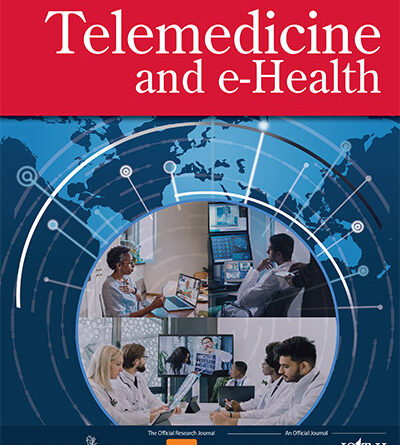Artificial Intelligence and Health Care: What’s to Worry?
[ad_1]
Artificial intelligence (AI) has been around for quite some time, probably since the mid-20th century. A recent PubMed search using the string “artificial intelligence and medicine” yielded greater than 54,000 items, with the first being published article in 1952. In this piece, Haward discusses the robot anesthetist.1 AI is everywhere all at once! Recent news reports highlight the pros and cons, enlightening us to the potential it has in a whole host of applications and making us aware of the dangers that can come with its wider application and acceptance in our daily lives.
We have well-known individuals commenting on the dangers of AI taking over our lives and perhaps replacing us. In May, the New York Times published a piece “What Exactly Are the Dangers Posed by A.I.?” by Cade Metz.2 Metz writes that in late March 2023, greater than 1,000 leaders in technology stated “AI technologies present profound risks to society and humanity.” This group produced a letter with more than 27,000 signatories stating to basically go slow so as to manage the risks AI brings appropriately. As this technology continues to be developed, questions arise such as “is this fake or real?” or “can we trust the information/decision generated” or “does this/can this take the human out of the loop?”
For example, we know now that ChatGPT, a natural language-based AI, can generate an article; this can be an issue for scientific journals and students who must write articles and theses for their coursework, promotion and tenure, or sharing discoveries! Anderson et al. discuss the pros and cons of AI in generating articles in the discipline of sports and exercise medicine.3
The idea of AI and its impact on society as seen in sensational movies like the Terminator, which has the AI System—Skynet, portray humans and machine (the Terminator) in a battle of supremacy for humanity versus Skynet.4 Although this is a fictionalization, it makes us aware of possibilities and potential pit falls.
Through time, innovation has created growth and opportunities. AI is no different; we may very well become overdependent on systems. An autonomous car can work, but should the driver be able to take the wheel? Remember the first cars with cruise control? How about those self-regulating thermostats in our “smart” houses? AI has a place in everything we do, especially in health care. Large data sets can be reviewed nearly instantaneously and that can be a great tool for the physician, a sort of digital assistant—not a replacement!
Our contemporaries may believe that we are only at the beginning of our journey with AI in health care. If it comes to pass that it is embedded in the health care delivery system, it must be universally applied. Otherwise the digital divide, already a huge crevasse, will only get larger.
The Need for Data Reliability
In the early part of the 21st century, we have become overwhelmed, perhaps drowning in data. I recall a presentation by Dr. Charles “C” Everett Koop in the mid-1990s, where he quipped that when he returned home from a long day, he would pick up the journal of his specialty (pediatric surgery), and realized that if he did this every night, by the end of the year, he would be 800 years behind. The only way we can comprehend all the data we have collected, are collecting, or will collect in the future, is to use computers and tools that can help us (key word help) review these data and make decisions.
Some mundane tasks can be, and have been, automated—all with uninhibited regularity. Sensors and robots do functions for us. AI is embedded in nearly everything in our lives. It helps with precision medicine and many other facets that can make some tasks by humans obsolete. Although this may very well have its own challenges, we should remain attentive. More research will need to be conducted and reported here. Sauerbrei et al. in their most recent publication talk about the lack of concrete evidence on the impact on person-centered and doctor–patient relationships.5 It is a fast moving paradigm and we should be concerned. However, humanity is smart enough to manage both risk and expectations! Do not lose hope!6
What Is in This Issue
This issue contains excellent perspectives from several of our board members and three excellent reviews on schizophrenia, wearable photoplethysmograpy, and Veterans Gerofit. Although the public health emergency may be over, there are a number of COVID-19 articles in line to be published. This issue has four. The countries that are represented in this issue include Canada, India, Lebanon, Spain, South Korea, Uganda, and the United States.
We are at the midpoint of our 29th year and although telemedicine and telehealth have changed a lot in these three decades, it is the next decade that will see the most significant change.
REFERENCES
- 1. . The robot anaesthetist; an introduction to the automatic control of anaesthesia by means of an electro-encephalographic intermediary. Med World 1952;76(23):624–626. Medline, Google Scholar
- 2. What exactly are the dangers posed by A.I.? New York Times. Available from: https://www.nytimes.com/2023/05/01/technology/ai-problems-danger-chatgpt.html (Last accessed: May 15, 2023). Google Scholar
- 3. AI did not write this manuscript, or did it? Can we trick the AI text detector into generated texts? The potential future of ChatGPT and AI in Sports & Exercise Medicine manuscript generation. BMJ Open Sport Exerc Med 2023;9(1):e001568. Crossref, Medline, Google Scholar
- 4.
The Terminator . James Cameron, Director. Hemdale/Pacific Western Productions, Orion Pictures Distributor; 1984. Google Scholar - 5. The impact of artificial intelligence on the person-centred, doctor-patient relationship: Some problems and solutions. BMC Med Inform Decis Mak 2023;23(1):73; doi:
10.1186/s12911-023-02162-y Crossref, Medline, Google Scholar - 6. . Artificial intelligence reconsidered. Telemed J E Health 2018;24(2):93; doi:
10.1089/tmj.2018.29001.crd Link, Google Scholar
[ad_2]
Source link


